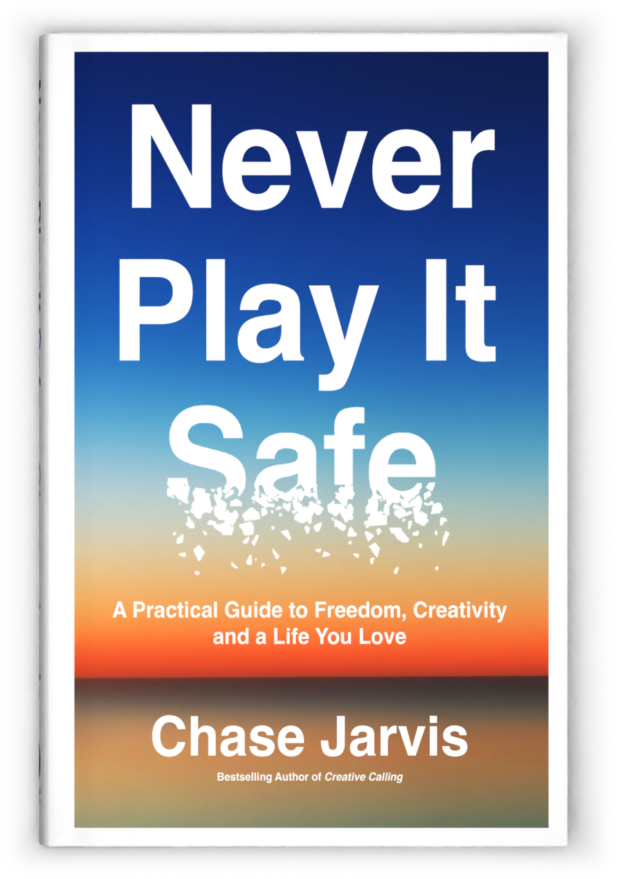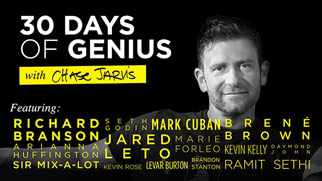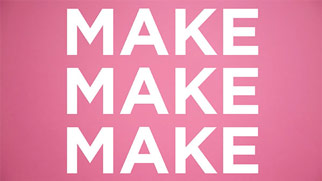 About 18 months ago, I wrote about Chris Anderson’s ‘Free’ in the context of the ever-evolving landscape of photography, video, and their relation to new media. In today’s New Yorker Magazine, Malcolm Gladwell (author of The Tipping Point,
About 18 months ago, I wrote about Chris Anderson’s ‘Free’ in the context of the ever-evolving landscape of photography, video, and their relation to new media. In today’s New Yorker Magazine, Malcolm Gladwell (author of The Tipping Point,Blink,
and Outliers,
) offers some cogent analysis and great counterpoints to Anderson’s claims that are well worth the read:
“…And there’s plenty of other information out there that has chosen to run in the opposite direction from Free. The Times gives away its content on its Web site. But the Wall Street Journal has found that more than a million subscribers are quite happy to pay for the privilege of reading online. Broadcast television—the original practitioner of Free—is struggling. But premium cable, with its stiff monthly charges for specialty content, is doing just fine. Apple may soon make more money selling iPhone downloads (ideas) than it does from the iPhone itself (stuff). The company could one day give away the iPhone to boost downloads; it could give away the downloads to boost iPhone sales; or it could continue to do what it does now, and charge for both. Who knows? The only iron law here is the one too obvious to write a book about, which is that the digital age has so transformed the ways in which things are made and sold that there are no iron laws.”
Counter to some predictions, photography and video are are not bound to ‘Free’. I’m in agreement with Anderson that ‘Free’ is most certainly carving out its space–even reasonably so–in every digitally based industry, but I’m in complete alignment with Gladwell that the two markets ‘Free’ and ‘Not Free’ can and will continue to co-exist reasonably nicely. The trick is/will be in…[click the ‘continue reading’ link below]
—
…finding the balance. I find this to be the case in my own personal preferences, both in regards to how I obtain digital content as a user, as well as my life as a content creator and distributor.
Suffice it to say, this article is an essential read if you’re at all interested in the intersection of art + new media. Get it here (for free 😉 at the New Yorker: Priced to Sell, Is Free the Future?
Update…Featured Comment: I thought this comment by Craig Swanson of CreativeTechs was particularly smart and did a nice job of bridging the gap between Gladwell and Anderson. As such I’m featuring it here. I’d also say you could sub my name out of his thoughts and insert any independent artist who has taken a similar path…be it you or any other photographer on this march…
I’ve spent the weekend listening to the abridged audiobook of Chris Anderson’s FREE. Which I (of course) downloaded for free as digital MP3 files. I think there is a tremendously important, and frequently missed point in the concept of “Free” as a business model tactic in today’s digital economy.
In Chapter 3, Chris Anderson compares the results of abundance vs. scarcity in the prices of digital items in today’s information industries.
I can’t easily find the specific quote in the audiobook (which is one reason I’ve already ordered and paid for the printed edition), but Anderson compares the prices of digital commodities that are racing towards “Free” with other digital products such as Microsoft’s Windows, or Adobe’s Photoshop which have held their prices even while the marginal cost of manufacturing individual copies has dropped to nearly nothing.
The difference being that, for the moment, Microsoft and Adobe have maintained a level of monopoly with their products. If you want “Photoshop” there is only one company who makes it (Leaving out piracy and theft for the moment).
The question becomes where you and your creative work falls.
Today, we’ve seen the great abundance and availability of stock photography reducing the value and revenue from individual stock collections. Based on results, I think it is fair to note that generic stock image libraries are among the digital products already on a steady march towards “Free”.
Meanwhile, the value of time and creativity from certain specific photographers (like you Chase) have increased greatly over that same period. While photography as a whole is quite abundant (abundant digital items are racing towards “Free” status), the availability of, for example, “Chase Jarvis” is quite scarce these days. (Scarce items maintain and even increase their value).
So I think this has a lot to do with how we manage our careers and art in the future. To maintain our value we must become our own monopoly. Become a “generic” photographer, designer, copywriter, or in my case Mac IT tech, and watch your market value drop as the world shifts.
Become a monopoly of one, and watch your value grow. I may be able to hire a generic photographer at a wide range of prices (including free in some cases). But if I want to hire Chase Jarvis, there is a single person who controls the price and availability of that particular monopoly.
It isn’t easy. It isn’t even fair. But it is the world we’re living in.
[Thanks @mcbill for the tip! Gladwell image by C. Davidson/Hastac; Anderson image by Joebeone.]

























Related to Merck Individual Care The modern Merck is a international clinical alpha dog fitting in with profit the environment be. Merck Individual Care is a part for Merck Company., Inc. Each day, large numbers trust in a number of our own industry leading makes which help eliminate or perhaps treat many common types of conditions.
I used to be very saddend to hear in regards to the death of Alan Mann. My husband Roy Butfoy was almost certainly the 1st individual to become hired by Alan when he decided to go into competition racing. It had been from Lincon Cars, in Brentford, Middlesex component of Ford Motor Company that Graham Hill was chosen as the driver, before they moved tobr /Byfleet, Surrey. I used to be a newly wed and my son Lloyd was the initially child for being born in the Alan Mann Racing company along with Sir John Whitmore’s daughter. My husband Roy Butfoy passed away in 2000 although the last time we witnessed Alan was in Northern California at the Cobra 30th calendar year reunion, along with drivers Sir John Whitmore, Gentleman Jack Bailey, Dan Gurney, Carol Shelby, Bob Bonurant’br /and many others that came specially for the reunion,. Several of your fellas who worked about the cars also arrived for the request of the current owners on the cars. An excellent time was experienced by all and the guys all experienced being inside their 20s once more staying driven throughout the track during the vintage Cobra’s.br /Forgive me for not remembering all of the names of the guys who worked for Alan in Byfleet but I know all of them experienced precisely the same that doing the job for Alan was a great encounter and he was such a terrific man. Roy Butfoy, Nornan Lockford, Jim Rose, Grev Hesketh, Bostick, Stewart, Brian, Aunty, Ted as well as the ones that escape my memory. Also the types in Usa wherein we now reside Roger Bailey, Charlie Agapiou and Lee Holman.
Isn't this all really a discussion about price elasticity of demand?
http://en.wikipedia.org/wiki/Price_elasticity_of_demand
In the case of "art," demand is likely to be fairly elastic (because it isn't vital to any core function of life/survival)… I think that's the primary determinant in this case, although as always it is more complicated than that, which is why it is so difficult to operationalize these things.
it is actually quite simple 🙂
Sheep Is Free (SIF) License Version 1.0
June 2005 Copyright (C) No such thing. Sofia, Bulgaria
Everyone is permitted to copy and distribute verbatim copies of this license document, and changing it anyway necessary is so allowed.
Preamble
Once there was a little prince. He came to a man, who happened to be an artist. And as he had also been crashed in the desert with his airplane, he obviously had a lot of free time. Aside from sweating and cursing the sun, that is. So, the little prince asked the man to draw a sheep for him. Kind of strange thing to ask. Yet having so much spare time, the man granted his wish and drew the little prince a sheep. And the little prince was happy and went on with his wonderings. What seems strange in this story?The little prince did not pay for the sheep. It was given to him for free.What do you suppose would have happened if the little prince had landed at, for instance, Adobe Corporation? Ha.
What I mean is: Giving away sheep for free is everyone’s personal right. It might be even better than charging for your sheep.Of course, the bankers and the managers will scream out-loud just now:” And what, excuse me, Mr. Free-World-Hippy will you eat if you dispose of all of your creations for free?” Now, ain’t that funny. Where did I put “all”?
You will charge for your sheep. Of course. But once in a while, according to this License agreement you have the right to give away a sheep for free. And that is what this License stands for.
Sheep Is Free License
TERMS AND CONDITIONS FOR COPYING, DISTRIBUTION AND MODIFICATION
You may copy and distribute copies of the sheep you created. Of course, sheep is just a term here. You may create anything you want. It doesn’t have to be a sheep. You may charge a fee for anything you have created. You may modify the sheep or whatever it is someone else has created, of course, if that someone has licensed his work under the conditions of this License agreement, or if you believe he would have done it if he had known about it.
NO WARRANTY
By following the practices described in this License agreement you may fall either under the pressure of the Law, or into deep poverty. You may also find a prince/princess. Anything can happen.
How to apply this License agreement
If you create a sheep, a poem, a space shuttle, whatever, you can either charge someone for it, or you can give it away for free if there is someone to give it to.
That’s just about all.
Konstantin Minov